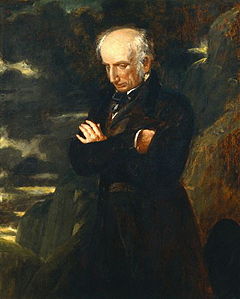Irena Sendler’s story, “In the Name of Their Mothers” on PBS May 1: Interview with filmmaker Mary Skinner, Part 3
Saturday, April 30th, 2011 May 1st is Holocaust Remembrance Day – it is also the national premiere of PBS’ In the Name of Their Mothers, a documentary film about the Polish social worker Irena Sendler, who saved 2,500 Jewish babies and children from the Warsaw Ghetto and almost certain death at Treblinka. (Check local times here, and you can buy the DVD here.)
May 1st is Holocaust Remembrance Day – it is also the national premiere of PBS’ In the Name of Their Mothers, a documentary film about the Polish social worker Irena Sendler, who saved 2,500 Jewish babies and children from the Warsaw Ghetto and almost certain death at Treblinka. (Check local times here, and you can buy the DVD here.)
I’ve written about Irena Sendler before, here and here.
This is the third part of a 4-part interview, which took place following a Stanford screening of the film on October 28, 2010. Part 1, with a trailer for the film, is here. Part 2, with a youtube video featuring an interview with Irena Sendler, is here.
Incidentally, there’s an article here this week in JWeekly, “Modesty is the M.O. for Polish heroine Irena Sendler.” An excerpt from Sendler herself:
“I could not have achieved anything were it not for that group of women I trusted who were with me in the ghetto every day and who transformed their homes into care centers for the children,” she declared. “These were exceptionally brave and noble people.”
She continued, “As for me, it was simple. I remember what my father had taught me. ‘When someone is drowning, give him your hand.’ And I simply tried to extend my hand to the Jewish people.”
CH: Why did people in the Polish resistance keep quiet about their work after the war?
The Allies basically ceded Poland to Stalin. It was his war booty in exchange for having given up 30 million Russian lives to overthrow Hitler. When Stalin took over, he installed a puppet government. People who had been participating in the Polish resistance were perceived to be enemies of the state because they were for a free and independent Poland.
Most of the leaders of the Polish resistance were caught tortured and executed in these mock trials. Many others were suspected of being friends with people in the resistance or part of the resistance or knowledgeable in any way or having socialized with somebody in the resistance. They could be summoned in and interrogated and their lives could be made miserable. People like Magda Rusinek – her father had been a minister in the interwar government.
It wasn’t until 1989, really, that the stories really started coming out.
CH: Is this is part of why the Irena Sendler was reluctant to speak with you? She’d been silent for so long.
MS: Definitely. After several hundred years of occupation and not being allowed to speak Polish, the Polish people had become very good at running underground universities and doing clandestine work and using codenames and keeping each other’s secrets.
Many of these women said, “Oh, we knew this stuff from our grandmothers,” because their grandmothers had been using these techniques against the Russians before 1918, so they all knew how to do messages and swallow pieces of paper and hide things behind their ears. Or how to do secret meetings and how to tip each other off – if you’re being watched, tip the flowerpot over so that everyone else in the resistance knows, “don’t go near that house, it’s been burned.” All these techniques they had learned from their parents, from their mothers. They were using them as part of this network against the Nazis and they all used codenames.
One said, “We didn’t know, and we didn’t want to know what each others’ real name was, where each other lived, who each other’s parents were, what each other’s profession was before the war.”
This kind of code didn’t just go away after the war ended, because then they were experiencing another totalitarian regime, the Soviet one, and so people who were just good eggs like Sendler just kept trying to do social work and not get anybody in trouble.
That’s how she spent the rest of her life. So to go on TV and talk about real children and real names and tell real stories is really difficult for her – and difficult for anyone who had done this work.
Question from the audience: “I’m going to assume that most of the parents didn’t survive. What happened to the children who were being protected in these homes and orphanages after the war?”
MS: Most of the children’s biological parents did not survive, true. The Jewish committee in Warsaw was run, in the months and years immediately following the war, by Adolf Berman, who had been Irena Sendler’s colleague. He had been responsible for gathering up all of this information, not only for children, but for all Jews living in Poland.
They were receiving quite a bit of humanitarian aid at that point, because people were starting to find out what actually happened to these people. Sendler and Jadwiga Piotrowska turned a lot of their information over to Adolf Berman and then he was responsible for trying to figure out ways for all remaining Jewish children in Poland to be identified and to be reunited with their families of origin, if possible, and if not possible, to be sent to Israel.
CH: One question I had from the film: She was talking about the children who didn’t speak a word of Polish, children who only spoke Yiddish. How on earth they hide the children who couldn’t speak Polish?
MS: The purpose of the safehouses was to spend a little bit of time with them before they were moved to the next place. One of Hanna’s jobs was to sit with the children and to sing Yiddish songs with them, and gradually to teach them a few words of Polish. The purpose of these emergency care centers – and it was part of this whole social work system that they had evolved before the war – was to calm the children down and to start to teach them aenough words of Polish so that they could say the right thing if they were interrogated by a German soldier.































